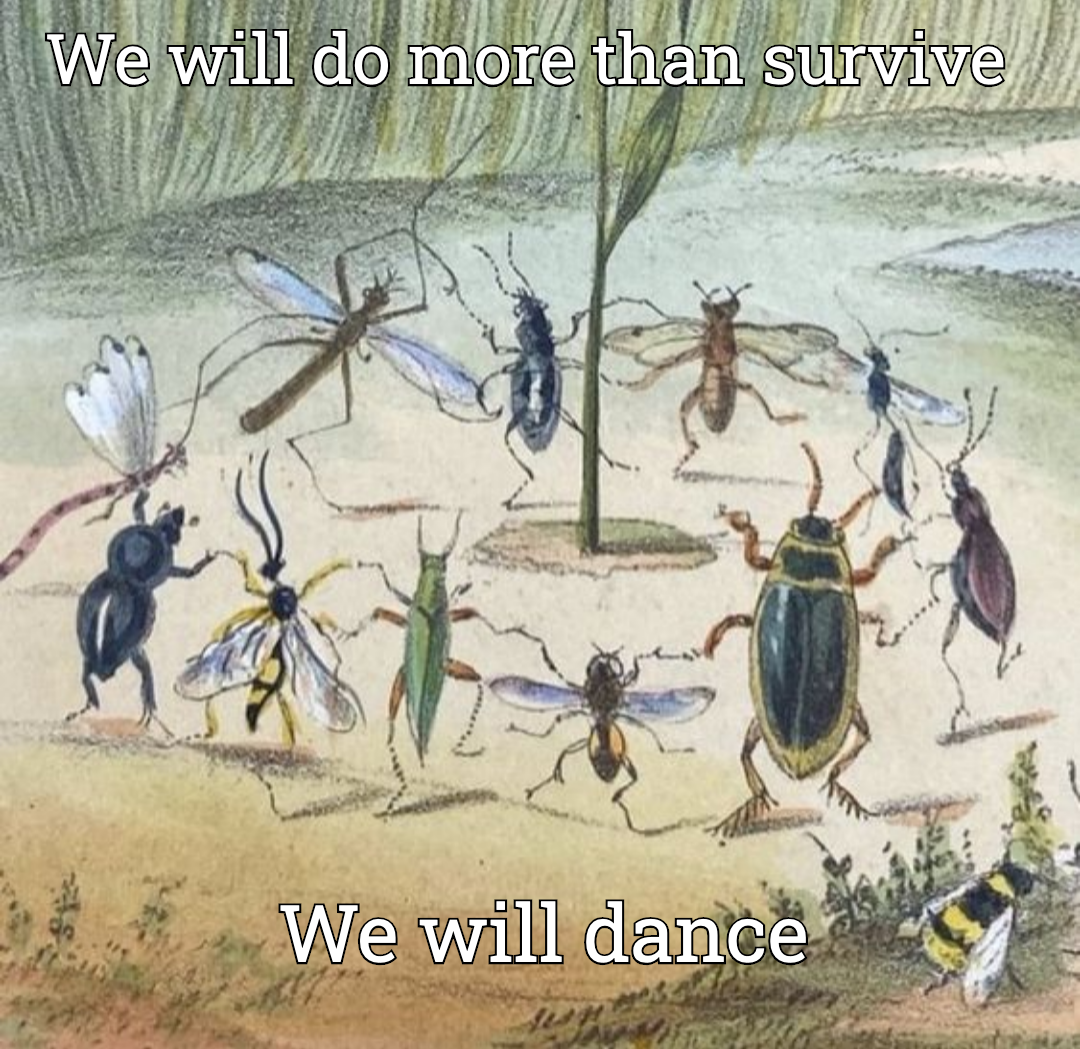 Here, I will include projects that are suitable for backyards in sub/urban environments, as these are lower-effort introductions to tangible, in-person experiences with insects.
Here, I will include projects that are suitable for backyards in sub/urban environments, as these are lower-effort introductions to tangible, in-person experiences with insects.
However, creation of habitats that need active human intervention to maintain is not ideal, because that leaves everyone subject to your whim and ability to follow through with that maintenance. You have way too much power in that situation so please relinquish it!
Plant more plants that insects thrive in. Understand what kind of creatures and lifeforms get along well in your environment.
Plants that can mutually support insects and other lifeforms are better homes and food sources than us. I.e.: rather than leaving out food and constructing homes you need to clean/fix periodically, it is better to let plants grow which insects would choose for homes and food on their own.
For north america, here are pollinator-friendly native plant lists sorted by region (Xerces Society).Plants eat sunshine and water and grow best in particular types of soils. Pick the plants that are best suited to conditions of your locale. Then, leave them be. Then, don't fuck with them. No pesticides. No traps.
My everyday carry: notebook and pen, field guide, hand lens, small ruler or measuring tape, red light for illumination after sundown, camera.
See: backyardnature.net list of tools for naturalistsRecord what insects you see and what they are doing. If possible, go at a regular time and visit the same places. If you can't identify an insect, describe what they look like or draw a picture.
Avoid touching and bothering them or otherwise obstructing their free movement. I only move an insect if ki appears to be in imminent danger.Insects make fantastic subjects of photography, especially if you have a good macrolens! I would like to share some of my own pictures soon. HOWEVER, getting an in-focus picture, the right angle, etc. is worth far less than the insect's peace. Don't pester them to the point they have to leave! They don't like nosy and insistent camerapeople in their faces!!
Hoverfly lagoons [Description and PDF with instructions on BuzzClub] [WildlifeBCN blog with extra tips] [ChildsplayABC blog with pictures of steps]
* 8:50 instructional video: [Invidious][youtube]Cavity-nesting bee houses (bees such as mason bees and leafcutter bees). See: Crown Bees - New to Bees
Bug Bunkers for overwintering insects [Description and PDF with instructions on BuzzClub]
Nesting & Overwintering Habitat for Pollinators & Other Beneficial Insects [From Xerces Society (PDF)]
Includes:
- Save the stems
- Leave the leaves
- Redefine the “perfect” lawn
- Rethink how you use mulch
- Save a snag and “plant” a log
- Build a brush pile
- Build a rock pile or rock wall
- Provide a safe water source
- Install a habitat sign
Earwig hotels [Description and PDF with instructions on BuzzClub]
* 8:48 instructional video: [Invidious][youtube]Bumblebee pots
* 3:30 instructional video: [Invidious][youtube]providing water for bees
* Considerations written about in Honeybee Suite posts: [Bees and Water][Help a Drowning Bee][Help a Bee in Distress]beetle banks [instructions at kidsgardening.org] [Instructions with images in 2 page PDF]
Print zines, make your own zines, leave them in little free libraries. Create a collage or a shrine to an insect. Signage ideas:
- Watch your step! Do not crush animals underfoot
- Leave the leaves! Essential insects overwinter here
- No Pesticides! Pollinators need to live!
- etc...
Glue traps: *update* - after doing some testing, applying gritty substances like sand, dirt, and glitter to cover all the surface area of the trap works best. Water, soap, and oil could be washed off and glue remained sticky. Someone once recommended using WD-40 an acrylic spray to neutralize the trap without looking obvious.
Pheremone traps: remove the pheremone cartridge and chuck it into a bush. Sometimes the bottom container simply screws off.
Hanging bags of vinegar: slash plastic sack with a pocket knife. This is to drain vinegar/corpse solution and create an exit for survivors.
Poison traps: block access somehow, perhaps with expanding foam.
Zappers: smashBe creative and safe.